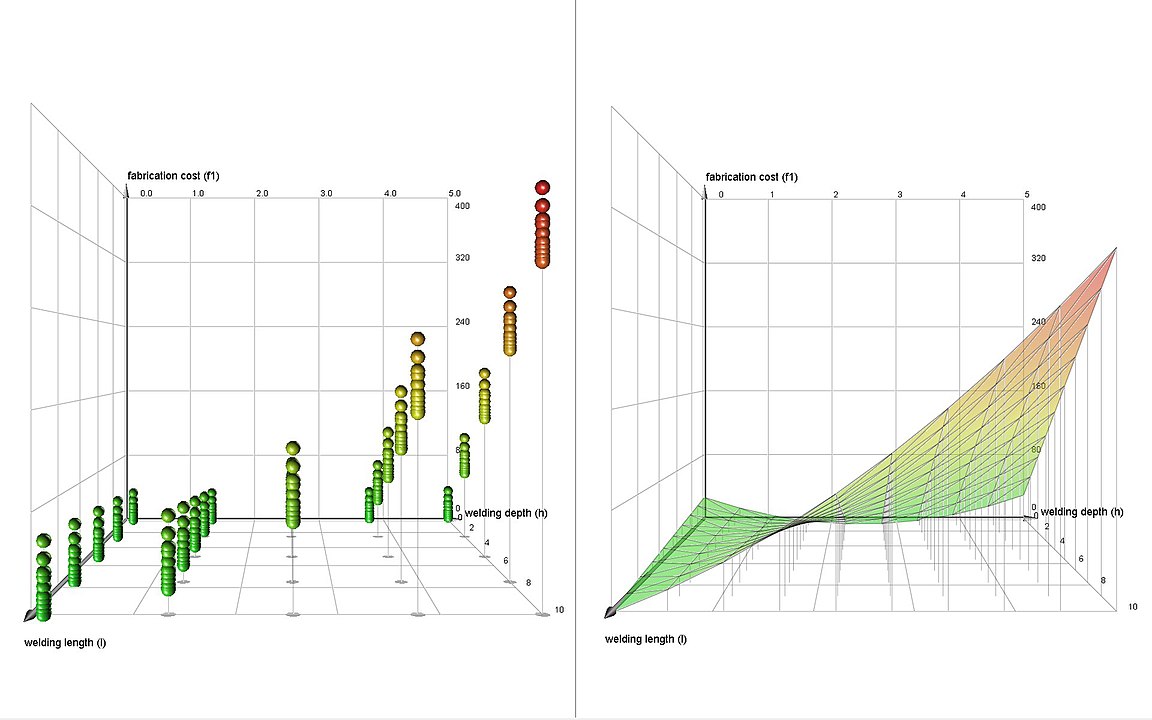Quellenangabe: Die folgenden Ausführungen sind entlehnt aus: Coelli, T.J., Rao, D.S.P., O'Donnell, C.J., Battese, G.E.An Introduction to Efficiency and Productivity Analysis, 2nd Edition, Berlin-NewYork 2005, ISBN 978-0-387-25895-9
Diese Veröffentlichung gerade auch in ihrer 2. Auflage von Timothy Coelli mit Coautoren richtet sich an ein Publikum das sich wissenschaftlich fundiert mit Effizienz- und Produktivitätsanalysen beschäftigen.
Das Buch bietet eine leicht zugängliche Einführung in die vier wichtigsten Methoden:
- ökonometrische Schätzung mithilfe von average response models
- Indexnummern
- Data Envelope Analysis (DEA)
- Stochastic Frontier Analysis (SFA)
mit Beispielen und Anregungen für Erweiterungen der Grundmethoden.
Average Response Models:
Quelle: https://en.wikipedia.org/wiki/Response_surface_methodology
In statistics, response surface methodology (RSM) explores the relationships between several explanatory variables and one or more response variables. The method was introduced by George E. P. Box and K. B. Wilson in 1951. The main idea of RSM is to use a sequence of designed experiments to obtain an optimal response. Box and Wilson suggest using a second-degree polynomial model to do this. They acknowledge that this model is only an approximation, but they use it because such a model is easy to estimate and apply, even when little is known about the process.
 ---
---
Designed experiments with full factorial design (left), response surface with second-degree polynomial (right). Download in Originalgröße
Statistical approaches such as RSM can be employed to maximize the production of a special substance by optimization of operational factors. In contrast to conventional methods, the interaction among process variables can be determined by statistical techniques.
An easy way to estimate a first-degree polynomial model is to use a factorial experiment or a fractional factorial design. This is sufficient to determine which explanatory variables affect the response variable(s) of interest. Once it is suspected that only significant explanatory variables are left, then a more complicated design, such as a central composite design can be implemented to estimate a second-degree polynomial model, which is still only an approximation at best. However, the second-degree model can be used to optimize (maximize, minimize, or attain a specific target for) the response variable(s) of interest.
The second edition of this book has been written for the same audience as the first edition. It is designed to be a "first port of call" for people wishing to study efficiency and productivity analysis. The book provides an accessible introduction to the four principal methods involved: econometric estimation of average response models; index numbers; data envelopment analysis (DEA); and stochastic firontier analysis (SFA). For each method, we provide a detailed introduction to the basic concepts, give some simple numerical examples, discuss some of the more important extensions to the basic methods, and provide references for further reading. In addition, we provide a number of detailed empirical applications using real-world data. The book can be used as a textbook or as a reference text. As a textbook, it probably contains too much material to cover in a single semester, so most instructors will want to design a course around a subset of chapters. For example, Chapter 2 is devoted to a review of production economics and could probably be skipped in a course for graduate economics majors. However, it should prove useful to undergraduate students and those doing a major in another field, such as business management or health studies.

